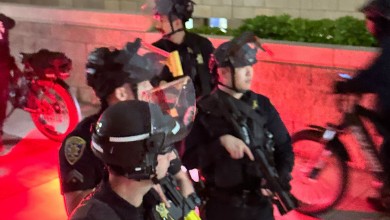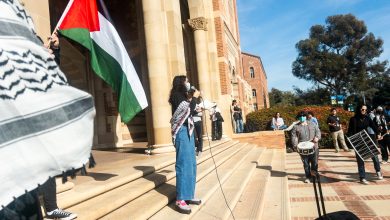SoCal LGBTQIA Health Conference

Photo by Laine Gruver
On Saturday Feb.18, the third annual SoCal LGBTQIA Health Conference was held at the David Geffen School of Medicine at UCLA. The conference offered four tracks: Healing Self, Healing Patients, Healing Community, and Continuing Medical Education, each aimed at regaining and uplifting the collective voice of the LGBTQIA community within healthcare. I participated in the Healing Community program, and was overwhelmed by the positive strides that the conference made towards solving healthcare problems the LGBTQIA community faces.
The conference began with an opening keynote led by trans-activist Bamby Salcedo. Salcedo skillfully commanded a room of healthcare professionals and students by introducing the goals of the conference: to address LGBTQIA issues within the current healthcare climate. Speaking about trans women of color, she said, “There are efforts to pretty much eradicate our experience. We cannot be complacent, we cannot wait for things to happen.” Bamby finished her introduction by presenting the audience with a phrase that sparked hope, encapsulating the struggles that the LGBTQIA community has faced: resist in order to exist.
After the opening keynote, the track-specific presentations began. The first presentation of the Healing Community track was ‘Promoting Awareness in Community Clinics: Providing a Safe Space for the LGBTQI Population,’ and was led by Dr. Janine Roach. The presentation encompassed many aspects of LGBTQIA healthcare, such as an increased risk of mental health disorders in the LGBTQIA community and lack of appropriate medical training for healthcare professionals. The most important piece of information that I took away was about how simple it is to create a safe space within a clinic or hospital. While some of these safe spaces exist currently, there needs to be a movement to increase the number of LGBTQIA friendly hospitals and clinics to ensure that all people in the community have access to healthcare.
“You don’t want to be the barrier to someone getting healthcare,” Dr. Roach said, articulating the small changes healthcare professionals could implement to improve their clinical work environments. A simple revision she suggested was to change all forms to read “Gender:_______” instead of checking a box for male or female, in order to eliminate inherent homophobic gender binarism. Dr. Roach described stories of LGBTQIA patients who left healthcare practices because of judgment or poor treatment towards them by front desk staff or security guards, leaving them untreated.
She also admitted to mistakes she had made, mostly about patients whom she had misgendered or made other incorrect assumptions about. “How people present [themselves] doesn’t necessarily indicate how they identify,” she said. “I don’t think I can ever be open-minded enough.”
The next workshop, “Structural Vulnerability in Clinical Care,” was led by Dr. Philippe Bourgois. Dr. Bourgois’ talk focused primarily on heroin use in homeless communities, and the dangers associated with needle-sharing and lack of healthcare. Dr. Bourgois spoke of extending medical gaze outside clinical interaction by implementing new techniques outside of the hospital to increase medical attention to homeless and marginalized populations. He described this operationalization in terms of providing improved systematic healthcare options for homeless people needing treatment for addiction-related maladies. Although Dr. Bourgois addressed slightly different topics in the scope of LGBTQIA healthcare than the other speakers, his presentation shed light on the disparities between the healthcare of privileged and marginalized individuals.
Other workshops at the conference included “Sex Worker Health: Holistic Care,” “Work-Life Balance as an LGBTQ+ Provider Panel,” and “LGBTQIA Seniors and Their Social and Health Services Needs.” While most of the conference attendees were students in medical school or healthcare professionals, as an undergraduate student, I felt that the information was still applicable and useful to me.
The conference was successful in broadening perspectives on LGBTQIA healthcare, and providing tangible ways for healthcare professionals to make clinics and hospitals more accessible for LGBTQIA patients.




